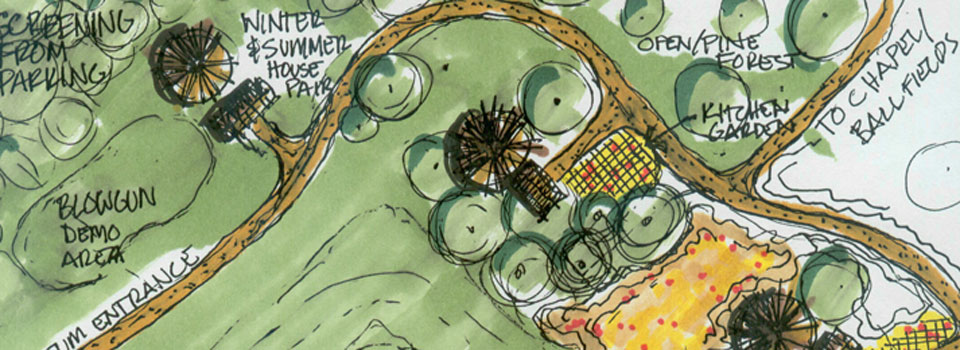Visitors to the Ancient Village at the Cherokee Heritage Center in Tahlequah, Okla., have for more than 40 years been treated to life as it might have existed in a southeastern Cherokee village in the 16th century. Now, a team from the University of Georgia is taking the lead in designing and constructing an entirely new model Cherokee village in Tahlequah, which is the capital of the Cherokee Nation. The new village, which will depict life as it might have been lived among the Cherokees around 1710 in the U.S. Southeast, will likely open in the summer of 2010.
Jace Weaver, director of the UGA Institute of Native American Studies, part of the Franklin College of Arts and Sciences, and a member of the UGA team, said that the timing is good for a new historic village to demonstrate to students and tourists the richness and heritage of how the Cherokee lived in the early period of contact. Others on the team from UGA are Ervan Garrison, professor and head of the department of anthropology, and Alfie Vick, an assistant professor in the UGA College of Environment and Design.
Vick, an expert on preserving and enhancing the function of natural systems that integrate human use, began drawing plans for the new village, based on historical documents and while working closely with officials from the Cherokee National Historical Society. While Vick and his students, some of whom were from North Park University in Chicago, were in the Cherokee Capital they met with Principal Chief Chad Smith, a UGA graduate. Smith and Vick began talking about needs that the Cherokee Heritage Center might have involving plants, and, as it turned out, the Cherokee had for some time been thinking about starting over with a new model village.
One major decision regarding the plans for a new village was to change the focus from the current imagined date of 1540 to 1710, just before the world of the Cherokee changed forever by substantial contact with whites. There are many other reasons for a new village, not the least of which is that scholarship on the Cherokee has dramatically increased in the past 40 years, and vastly more is known about them now than in 1967 when the model village was first built.
Just as important as historical accuracy in structures, however, is accuracy in the kinds of plants used in the new village, and the UGA team is working to ensure that plants native to the Southeast that will grow in that area of Oklahoma are used in the reconstruction. According to Vick, two-thirds of plants from the Southeast will grow there. This May, Vick and Weaver will again take students to Tahlequah to work on designs for plantings at the new village site.
